- Home
- Isaac Asimov
The Rest of the Robots
The Rest of the Robots Read online
The Rest of the Robots
Isaac Asimov
* * *
Isaac Asimov laid down the now-famous Three Laws of Robotics in 1941:
1. A robot may not injure a human being, or, through inaction, allow a human being to come to harm;
2. A robot must obey the orders given it by human beings except where such orders would conflict with the First Law;
3. A robot must protect its own existence as long as such protection does not conflict with the First or Second Law.
The results were truly revolutionary. SF writers everywhere have accepted the laws and there is no doubt that when robots are actually built they will be subject to Asimov's famous rules.
Meanwhile, the eight magnificent short stories collected in The Rest of the Robots completes the robotic saga begun in the first volume, /, Robot.
They are a 'must' for SF readers everywhere.
Also by Isaac Asimov
Foundation, Foundation and Empire, Second Foundation
Earth Is Room Enough
The Stars Like Dust
The Martian Way
The Currents of Space
The End of Eternity
The Naked Sun
The Caves of Steel
Asimov's Mysteries
The Gods Themselves
Nightfall One, Nightfall Two
I, Robot
The Early Asimov: Volume I
The Early Asimov: Volume II
The Early Asimov: Volume III
Nebula Award Stories 8 (ed)
The Stars in their Courses (non-fiction)
Tales of the Black Widowers (detection stories)
* * *
Granada Publishing Limited
Published in 1968 by Panther Books Ltd
Frogmore, St Albans, Herts, AL2 2NF
Reprinted 1969 (twice), 1972, 1973, 1974,1975, 1976
First published in Great Britain by
Dobson Books Ltd 1967
Copyright © Isaac Asimov 1964
Made and printed in Great Britain by
Richard Clay (The Chaucer Press) Ltd
Bungay, Suffolk
Set in Linotype Plantin
This book is sold subject to the condition that it shall not, by way of trade or otherwise, be lent, re-sold, hired out or otherwise circulated without the publisher's prior consent in any form of binding or cover other than that in which it is published and without a similar condition including this condition being imposed on the subsequent purchaser.
This book is published at a net price and is supplied subject to the Publishers Association Standard Conditions of Sale registered under the Restrictive Trade Practices Act, 1956.
* * *
To Tim,
Tom and Dick
My stalwart supporters at Doubleday
* * *
Robot AL-76 Goes Astray, Copyright 1941 by Ziff-Davis Publishing Co.; first appeared February 1942, Amazing Stories.
Victory Unintentional, Copyright 1942 by Fictioneers, Inc.; first appeared August 1942, Super Science Stories.
First Law, © 1956 by King-Size Publications, Inc.; first appeared October 1956, Fantastic Universe Science Fiction.
Let's Get Together, Copyright 1956 by Royal Publications, Inc.; first appeared February 1957, Infinity Science Fiction.
Satisfaction Guaranteed, Copyright 1950 by Fictioneers, Inc.; first appeared January 1951, Super Science Stories.
Risk, Copyright 1955 by Street & Smith Publications, Inc.; first appeared May 1955, Astounding Science Fiction.
Lenny, Copyright 1957 by Royal Publications, Inc.; first appeared January 1958, Infinity Science Fiction.
Galley Slave, Copyright New York 1957 by Galaxy Publishing Corporation; first appeared December 1957, Galaxy.
* * *
Contents
I The Coming of the Robots
1 Robot AL-76 Goes Astray
2 Victory Unintentional
II The Laws of Robotics
3 First Law
4 Let's Get Together
III Susan Calvin
5 Satisfaction Guaranteed
6 Risk
7 Lenny
8 Galley Slave
* * *
INTRODUCTION
Would you like to hear a writer's nightmare?
Well, then, imagine a writer of considerable reputation, who knows himself to be a Great Man. Bestow upon him a wife, a little woman who is a bit of a writer herself but, of course, nothing like her great, her magnificent husband, either in her own eyes, in the world's eyes, or (most important of all) in his eyes.
And imagine that, as a result of some conversation, the little woman suggests she write a novel on the subject. And the Great Man, smiling benignly, says, 'Of course, dear You go right ahead.'
And she does, and it is published, and it makes a perfectly gigantic sensation. And it follows, then, that although the Great Man is universally admitted to be Great, it is the little woman's novel which is best known forever afterward —so well known, in fact, that the title becomes a byword in the English language.
How grisly a situation for a normally egocentric professional writer that would be.
Yet I'm not making this up. It is a true story. It happened.
The Great Man is Percy Bysshe Shelley, one of the magnificent lyric poets of the English language. At the age of twenty-two, he eloped with Mary Wollstonecraft Godwin, an event which, however romantic, was slightly irregular, as Shelley was a married man at the time.
The publicity was such mat they were better off outside England, and in the summer of 1816 they stayed on the shores of Lake Geneva in Switzerland with the equally great poet and equally notorious gentleman, George Gordon, Lord Byron.
At the time, the scientific world was in a ferment. In 1791 the Italian physicist, Luigi Galvani, had discovered that frogs' muscles could be made to twitch if touched simultaneously by two different metals and it seemed to him that living tissue was filled with 'animal electricity.' This theory was disputed by another Italian physicist, Alessandro Volta, who showed that electric currents could be produced by the juxtaposition of different metals without the presence of Jiving or once-living tissue. Volta had invented the first battery and the English chemist, Humphrey Davy, went on in 1807 and 1808 to build an un-precedentedly powerful one and to carry out, with its help, all sorts of chemical reactions that had been impossible to chemists of the non-electrical age.
Electrieity was therefore a word of power and, although Galvani's 'animal electricity' had been quickly smashed by the researches of Volta, it remained a magic phrase among the lay public. Interest in the relationship of electricity to life was intense.
One evening a small group including Byron, Shelley, and Mary Godwin discussed the possibility of actually creating life by means of electricity, and it occurred to Mary that she might write a fantasy on the subject. Byron and Shelley approved; in fact they thought they, too, might write fantastic novels for the private amusement of the little company.
Only Mary actually carried this through. At the end of the year the first Mrs. Shelley committed suicide, so that Shelley and Mary could marry and return to England. In England, in 1817, Mary Shelley's novel was completed and in 1818 it was published. It was about a young scientist, a student of anatomy, who assembled a being in his laboratory and succeeded in infusing it with life by way of electricity. The being (given no name) was a monstrous eight-foot creature with a horrible face that frightened all beholders into fits.
The monster can find no place in human society and, in his misery, turns upon the scientist and all those dear to him. One by one the scientist's relatives (including his bride) are destroyed and in the end the scientist dies as
well. The monster wanders off into the wilderness, presumably to die of remorse.
The novel made a huge sensation and has never stopped making a huge sensation. There is simply no question as to which Shelley made the greater mark on people generally. To the students of literature, the Shelley may be Percy Bysshe, of course, but stop people on the street and ask them if they've ever heard of Adonais, or Ode to the West Wind, or The Cenci. Maybe they have, but very likely they have not. Then ask them if they have ever heard of Frankenstein.
For Frankenstein was the name of Airs. Shelley's novel and of the young scientist who created the monster. Ever since, 'a Frankenstein' has been used for anyone or anything that creates somedün gtiat destroys the creator. The exclamation 'I have created a Frankenstein's monster' has become such a cliche that it can be used only humorously nowadays.
Frankenstein achieved its success, at least in part, because it was a restatement of one of the enduring fears of mankind—that of dangerous knowledge. Frankenstein was another Faust, seeking knowledge not meant for man, and he had created his Mephistophelean nemesis.
In the early nineteenth century die exact nature of
Frankenstein's sacrilegious invasion of forbidden knowledge was clear. Man's advancing science might, conceivably, imbue dead matter with life; but nothing man could do could create a soul, for that was God's exclusive domain. Frankenstein therefore could, at best, create a soulless intelligence, and such an ambition was evil and deserving of ultimate punishment.
The theological 'thou shalt not' barrier against man's advancing knowledge and intensifying science weakened as the nineteenth century progressed. The industrial revolution broadened and deepened and the Faustian motif gave way, temporarily, to a buoyant belief in progress and an inevitably approaching utopia-through-science.
This dream, alas, was shattered by World War I. That horrible holocaust made it quite plain that science could, after all, be an enemy of humanity. It was through science that new explosives were manufactured and that airplanes and airships were constructed to carry those explosives to areas behind the lines that earlier might have been secure. It was science that made possible, in particular, that ultimate horror of the trenches, poison gas.The Faustian role of science in World War I was dwarfed to insignificance by its role in World War II and in the Cold War. The hydrogen bomb and bacteriological warfare reduce poison-gas attacks to mere inconveniences. (Consequently the Evil Scientist or, at best, the Foolishly Sacrilegious Scientist became a stock character in post-World War I science fiction.)
In the days immediately following the war an extremely dramatic and influential example of this motif was advanced, again revolving about the creation of quasi-life. This was the play R.U.R. by the Czech writer, Karel Capek. It was written in 1921 and translated into English in 1923. R.U.R. stood for Rossum's Universal Robots. Like Frankenstein, Rossum had discovered the secret of creating artificial men. These were called 'robots' from a Czech word meaning 'worker,' and the word entered the English language and gained a strong hold there.
The robots were intended, as their name implies, to be workers, but all goes wrong. Mankind, its motivation lost, ceases to reproduce itself. Statesmen learn to use the robots in war. The robots themselves rise in rebellion, destroy what is left of mankind, and take over the world.
Once again the scientific Faust has been destroyed by his Mephistophelean creation.
In the 1920s science fiction was becoming a popular art form for the first time, and no longer merely a tour de force in the hands of an occasional master such as Verne and Wells. Magazines devoted exclusively to science fiction appeared and 'science fiction writers' made their .appearance on the literary scene.
And one of the stock plots of science fiction was that of the invention of a robot—usually pictured as a creature of metal, without soul or emotion. Under the influence of the well-known deeds and ultimate fate of Frankenstein and Rossum, there seemed only one change to be rung on this plot.—Robots were created and destroyed their creator; robots were created and destroyed their creator; robots were created and destroyed their creator———
In the 1930s I became a science-fiction reader, and I quickly grew tired of this dull hundred-times-old tale. As a person interested in science, I resented the purely Faustian interpretation of science.
Knowledge has its dangers, yes, but is the response to be a retreat from knowledge? Are we prepared then to return to the ape and forfeit the very essence of humanity? Or is knowledge to be used as itself a barrier against the danger it brings?
In other words, Faust must indeed face Mephistopheles, but Faust does not have to be defeated!
Knives are manufactured with hilts so that they may be grasped safely, stairs possess banisters, electric wiring is insulated, pressure cookers have safety valves—in every artifact, thought is put into minimizing danger. Sometimes the safety achieved is insufficient because of limitations imposed by the nature of the universe or the nature of the human mind. However, the effort is there.
Consider a robot, then, as simply another artifact. It is not a sacrilegious invasion of the domain of the Almighty, any more (or any less) than any other artifact is. As a machine, a robot will surely be designed for safety, as far as possible. If robots are so advanced that they can mimic the thought processes of human beings, then surely the nature of those thought processes will be designed by human engineers and built-in safeguards will be added. The safety may not be perfect (what is?), but it will be as complete as men can make it.
With all this in mind I began, in 1940, to write robot stories of my own—but robot stories of a new variety. Never, never, was one of my robots to turn stupidly on his creator for no purpose but to demonstrate, for one more weary time, the crime and punishment of Faust.
Nonsense! My robots were machines designed by engineers, not pseudo-men created by blasphemers. My robots reacted along the rational lines that existed in their 'brains' from the moment of construction.
I must admit, though, that occasionally, in my early attempts, I saw the robot as little more than a figure of fun. I pictured it as a completely harmless creature, intent only on doing the work for which it was designed. It was incapable of harming men, yet it was victimized by human beings who, suffering from a 'Frankenstein complex' (as I called it in some of my stories), insisted on considering the poor machines to be deadly dangerous creatures.
An example of this is 'Robot AL-76 Goes Astray,' which first appeared in the February, 1942, Amazing Stories.
* * *
Part One
The Coming of the Robots
ROBOT AL-76 GOES ASTRAY
Jonathan Quell's eyes crinkled worriedly behind their rimless glasses as he charged through the door labeled 'General Manager.'
He slapped the folded paper in his hands upon the desk and panted, 'Look at that, boss!'
Sam Tobe juggled the cigar in his mouth from one cheek to the other, and looked. His hand went to his unshaven jaw and rasped along it. 'Hell!' he exploded. 'What are they talking about?'
'They say we sent out five AL robots,' Quell explained, quite unnecessarily.
'We sent six,' said Tobe.
'Sure, six! But they only got five at the other end. They sent out the serial numbers and AL-76 is missing.'
Tobe's chair went over backward as he heaved his thick bulk upright and went through the door as if he were on greased wheels. It was five hours after that—with the plant pulled apart from assembly rooms to vacuum chambers; with every one of the plant's two hundred employees put through the third-degree mill—that a sweating, disheveled Tobe sent an emergency message to the central plant at Schenectady.
And at the central plant, a sudden explosion of near panic took place. For the first time in the history of the United States Robots and Mechanical Men Corporation, a robot had escaped to the outer world. It wasn't so much that the law forbade the presence of any robot on Earth outside a licensed factory of the Corporation. Laws could al
ways be squared. What was much more to the point was the statement made by one of the research mathematicians.
He said: 'That robot was created to run a Disinto on the moon. Its positronic brain was equipped for a lunar environment, and only a lunar environment. On Earth it's going to receive seventy-five umptillion sense impressions for which it was never prepared. There's no telling what its reactions will be. No telling!' And he wiped a forehead that had suddenly gone wet, with the back of his hand.
Within the hour a stratoplane had left for the Virginia plant. The instructions were simple.
'Get that robot, and get it fast!'
AL-76 was confused! In fact, confusion was the only impression his delicate positronic brain retained. It had started when he had found himself in these strange surroundings. How it had come about, he no longer knew. Everything was mixed up.
There was green underfoot, and brown shafts rose all about him with more green on top. And the sky was blue where it should have been black. The sun was all right, round and yellow and hot—but where was the powdery pumice rock underfoot; where were the huge clifflike crater rings?
There was only the green below and the blue above. The sounds that surrounded him were all strange. He had passed through running water that had reached his waist. It was blue and cold and wet. And when he passed people, as he did, occasionally, they were without the space suits they should have been wearing. When they saw him, they shouted and ran.
One man had leveled a gun at him and the bullet had whistled past his head—and then that man had run too.
He had no idea of how long he had been wandering before he finally stumbled upon Randolph Payne's shack two miles out in the woods from the town of Hannaford. Randolph Payne himself—a screwdriver in one hand, a pipe in the other, and a battered ruin of a vacuum cleaner between his knees—squatted outside the doorway.

 The Return of the Black Widowers
The Return of the Black Widowers The Stars, Like Dust
The Stars, Like Dust Foundation
Foundation David Starr Space Ranger
David Starr Space Ranger I, Robot
I, Robot Puzzles of the Black Widowers
Puzzles of the Black Widowers Casebook of the Black Widowers
Casebook of the Black Widowers The Ugly Little Boy
The Ugly Little Boy Azazel
Azazel Pebble in the Sky
Pebble in the Sky Foundation and Empire
Foundation and Empire The Complete Robot
The Complete Robot Fantastic Voyage
Fantastic Voyage Foundation and Earth
Foundation and Earth The Naked Sun
The Naked Sun The Currents of Space
The Currents of Space Foundation's Edge
Foundation's Edge The Robots of Dawn
The Robots of Dawn Nightfall
Nightfall The Caves of Steel
The Caves of Steel Prelude to Foundation
Prelude to Foundation Nemesis
Nemesis Robot Dreams
Robot Dreams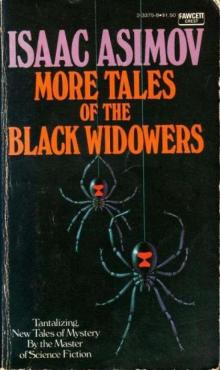 More Tales of the Black Widowers
More Tales of the Black Widowers The Complete Stories
The Complete Stories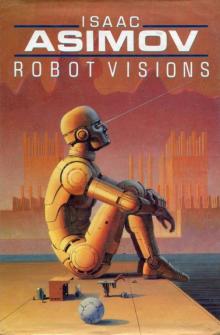 Robot Visions
Robot Visions Lucky Starr And The Moons of Jupiter
Lucky Starr And The Moons of Jupiter Lucky Starr and the Big Sun of Mercury
Lucky Starr and the Big Sun of Mercury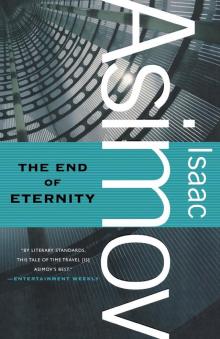 The End of Eternity
The End of Eternity The Bicentennial Man and Other Stories
The Bicentennial Man and Other Stories Lucky Starr And The Rings Of Saturn
Lucky Starr And The Rings Of Saturn Buy Jupiter and Other Stories
Buy Jupiter and Other Stories Forward the Foundation
Forward the Foundation Lucky Starr and the Oceans of Venus
Lucky Starr and the Oceans of Venus The Positronic Man
The Positronic Man The Portable Star
The Portable Star Asimovs Mysteries
Asimovs Mysteries Earth Is Room Enough
Earth Is Room Enough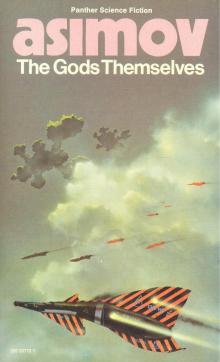 The Gods Themselves
The Gods Themselves Youth
Youth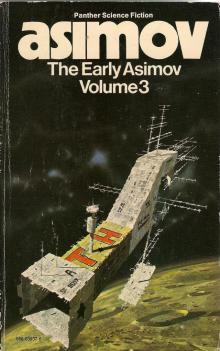 The Early Asimov Volume 3
The Early Asimov Volume 3 The Winds of Change and Other Stories
The Winds of Change and Other Stories Of Time, Space, and Other Things
Of Time, Space, and Other Things Nine Tomorrows
Nine Tomorrows Time Warps
Time Warps Robots and Empire
Robots and Empire Young Star Travelers
Young Star Travelers Fantastic Voyage II: Destination Brain
Fantastic Voyage II: Destination Brain Second Foundation
Second Foundation The Rest of the Robots
The Rest of the Robots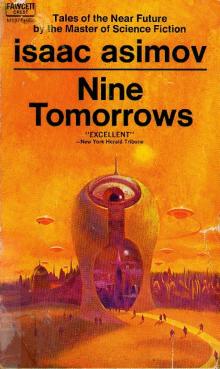 NINE TOMORROWS Tales of the Near Future
NINE TOMORROWS Tales of the Near Future Daneel Olivaw 1 - The Caves of Steel
Daneel Olivaw 1 - The Caves of Steel THE BICENTENNIAL MAN
THE BICENTENNIAL MAN David Starr Space Ranger (lucky starr)
David Starr Space Ranger (lucky starr)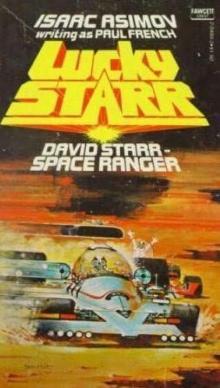 David Starr Space Ranger (ls)
David Starr Space Ranger (ls) Lucky Starr And The Big Sun Of Mercury ls-4
Lucky Starr And The Big Sun Of Mercury ls-4 Pebble In The Sky te-1
Pebble In The Sky te-1 Asimov’s Future History Volume 9
Asimov’s Future History Volume 9 Gold: The Final Science Fiction Collection
Gold: The Final Science Fiction Collection Foundation and Earth f-7
Foundation and Earth f-7 Asimov's New Guide to Science
Asimov's New Guide to Science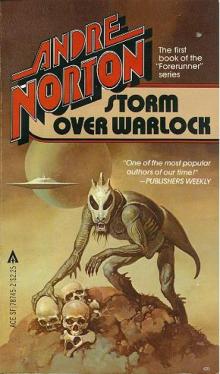 STORM OVER WARLOCK
STORM OVER WARLOCK Stars, Like Dust
Stars, Like Dust Norby The Mixed-Up Robot
Norby The Mixed-Up Robot Found!
Found! Asimov’s Future History Volume 11
Asimov’s Future History Volume 11 Second Foundation f-5
Second Foundation f-5 Asimov’s Future History Volume 15
Asimov’s Future History Volume 15 The Early Asimov. Volume 1
The Early Asimov. Volume 1 Secound Foundation
Secound Foundation Daneel Olivaw 3 - The Robots of Dawn
Daneel Olivaw 3 - The Robots of Dawn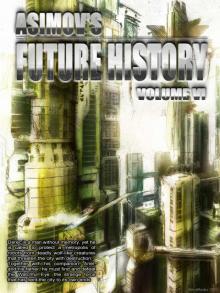 Asimov’s Future History Volume 6
Asimov’s Future History Volume 6 The Early Asimov. Volume 2
The Early Asimov. Volume 2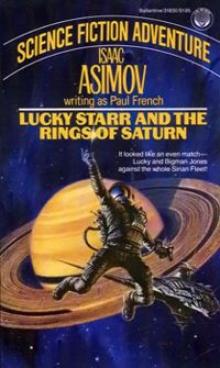 Lucky Starr And The Rings Of Saturn ls-6
Lucky Starr And The Rings Of Saturn ls-6 100 Malicious Little Mysteries
100 Malicious Little Mysteries Forward the Foundation f-2
Forward the Foundation f-2 I.Asimov: A Memoir
I.Asimov: A Memoir Foundation's Edge f-6
Foundation's Edge f-6 Lucky Starr and the Pirates of the Asteroids ls-2
Lucky Starr and the Pirates of the Asteroids ls-2 Robot City 1 & 2
Robot City 1 & 2 The Fourth Science Fiction Megapack
The Fourth Science Fiction Megapack Asimov’s Future History Volume 16
Asimov’s Future History Volume 16 The Dim Rumble
The Dim Rumble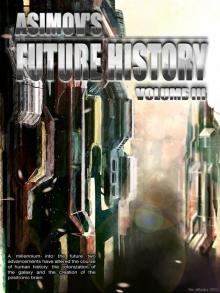 Asimov's Future History Volume 3
Asimov's Future History Volume 3 The Currents Of Space te-3
The Currents Of Space te-3 Asimov’s Guide To Shakespear. Volume 1
Asimov’s Guide To Shakespear. Volume 1 Asimov’s Future History Volume 13
Asimov’s Future History Volume 13 Asimov’s Future History Volume 12
Asimov’s Future History Volume 12 The Secret Sense
The Secret Sense Of Time and Space and Other Things
Of Time and Space and Other Things Norby tnc-2
Norby tnc-2 Norby The Mixed-Up Robot tnc-1
Norby The Mixed-Up Robot tnc-1 Misbegotten Missionary
Misbegotten Missionary Asimov’s Future History Volume 19
Asimov’s Future History Volume 19 Fantastic Voyage II: Destination Brain fv-2
Fantastic Voyage II: Destination Brain fv-2 Asimov’s Future History Volume 10
Asimov’s Future History Volume 10 Asimov's Future History Volume 2
Asimov's Future History Volume 2 Feeling of Power
Feeling of Power In the Beginning
In the Beginning The Caves of Steel trs-1
The Caves of Steel trs-1 Asimov's Future History Vol 2
Asimov's Future History Vol 2 Caliban c-1
Caliban c-1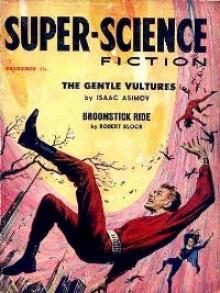 The Gentle Vultures
The Gentle Vultures Utopia c-3
Utopia c-3 Prelude to Foundation f-1
Prelude to Foundation f-1 Short Stories Vol.1
Short Stories Vol.1 Asimov’s Future History Volume 8
Asimov’s Future History Volume 8 Daneel Olivaw 4 - Robots and Empire
Daneel Olivaw 4 - Robots and Empire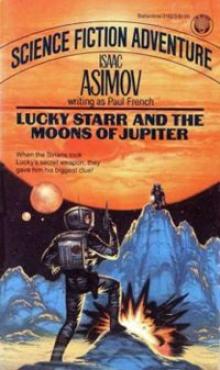 Lucky Starr The And The Moons of Jupiter ls-5
Lucky Starr The And The Moons of Jupiter ls-5 Gold
Gold Asimov’s Future History Volume 4
Asimov’s Future History Volume 4 Foundation and Empire f-4
Foundation and Empire f-4 Potential
Potential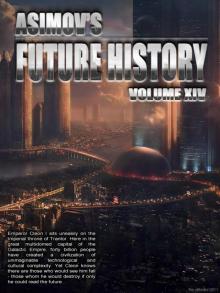 Asimov’s Future History Volume 14
Asimov’s Future History Volume 14 Asimov’s Future History Volume 7
Asimov’s Future History Volume 7 Daneel Olivaw 2 - The Naked Sun
Daneel Olivaw 2 - The Naked Sun Lucky Starr and the Pirates of the Asteroids
Lucky Starr and the Pirates of the Asteroids Foundation f-3
Foundation f-3 All the Troubles of the World
All the Troubles of the World Cleon the Emperor
Cleon the Emperor Asimov's Future History Volume 5
Asimov's Future History Volume 5 Asimov’s Future History Volume 20
Asimov’s Future History Volume 20 Robots and Empire trs-4
Robots and Empire trs-4 Profession
Profession It's Been a Good Life
It's Been a Good Life The Robots of Dawn trs-3
The Robots of Dawn trs-3 Lucky Starr And The Oceanf Of Venus ls-3
Lucky Starr And The Oceanf Of Venus ls-3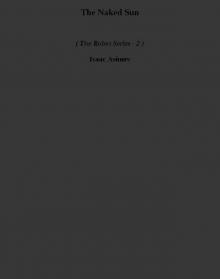 The Naked Sun trs-2
The Naked Sun trs-2 Asimov's Future History Volume 1
Asimov's Future History Volume 1